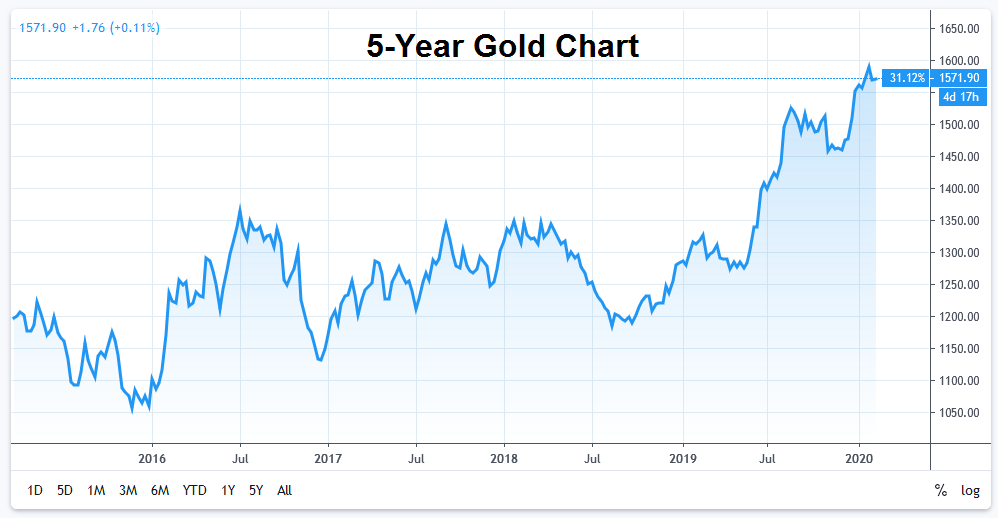Highlights from the report include:
- Total fourth quarter demand dropped 19% year-over-year to 1,045.2 tonnes and annual demand dipped 1% to 4,355.7 tonnes.
- Demand drop was attributed to lower jewellery and physical bar purchases due to the higher price of gold.
- As investors sought to diversify their portfolios, gold-backed ETFs and similar products saw a surge in demand and increased their total holdings to 2885.5 tonnes up 401.1 tonnes from the previous year.
- For the 10th consecutive year, Central banks were net buyers as global reserves grew by 650.3 tonnes, the second highest annual growth in the past 50 years.
- Global jewellery demand decreased by 6% year-over-year with China and India, which dominate global gold jewellery purchases, declining by 7% and 9% respectively. However, the value of jewellery purchases actually increased in 2019 by 3% to US$94.3 billion as the higher gold prices affected the total value purchased.
- Total annual gold supply increased by 2% in 2019 to 4,776.1 tonnes, mainly due to an 11% increase in recycling, as consumers capitalized on the increase in gold prices during the second half of the year.
- According to the report, mine production in 2019 was down 1% to 3,464 tonnes for the first annual decline since 2008.
- The gold price averaged US$1,481 per ounce in the fourth quarter of 2019, the highest quarterly average since Q1/2013, the report said, and gold priced in various currencies, including the Euro, Indian rupees and Turkish lira, hit their highest levels ever.
To view the full report, please visit the World Gold Council website.



